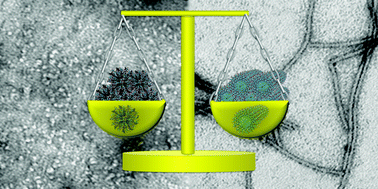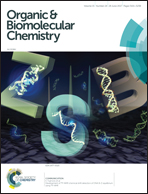Balancing the intermolecular forces in peptide amphiphiles for controlling self-assembly transitions†
Abstract
While the influence of alkyl chain length and headgroup size on self-assembly behaviour has been well-established for simple surfactants, the rational control over the pH- and concentration-dependent self-assembly behaviour in stimuli responsive peptides remains an elusive goal. Here, we show that different amphiphilic peptides can have similar self-assembly phase diagrams, providing the relative strengths of the attractive and repulsive forces are balanced. Using palmitoyl-YYAAEEEEK(DO3A:Gd)-NH2 and palmitoyl-YAAEEEEK(DO3A:Gd)-NH2 as controls, we show that reducing hydrophobic attractive forces through fewer methylene groups in the alkyl chain will lead to a similar self-assembly phase diagram as increasing the electrostatic repulsive forces via the addition of a glutamic acid residue. These changes allow creation of self-assembled MRI vehicles with slightly different micelle and nanofiber diameters but with minimal changes in the spin–lattice T1 relaxivity. These findings reveal a powerful strategy to design self-assembled vehicles with different sizes but with similar self-assembly profiles.

- This article is part of the themed collection: Peptide Materials


 Please wait while we load your content...
Please wait while we load your content...